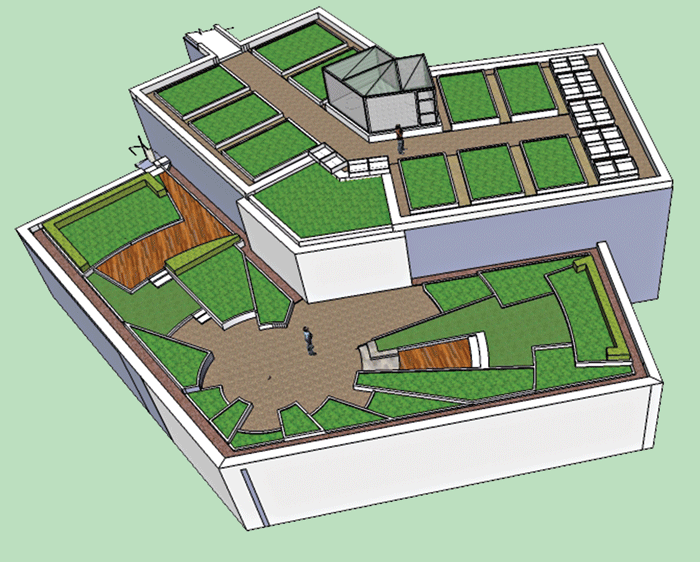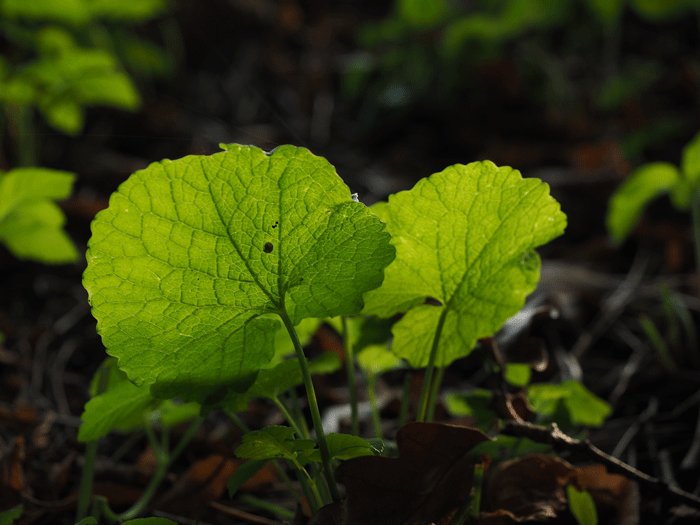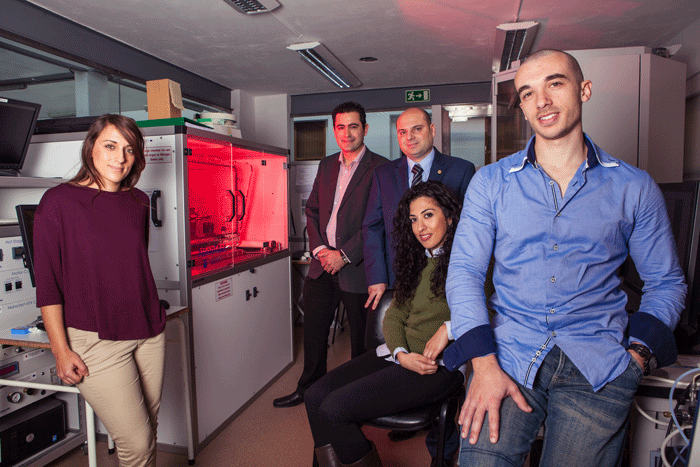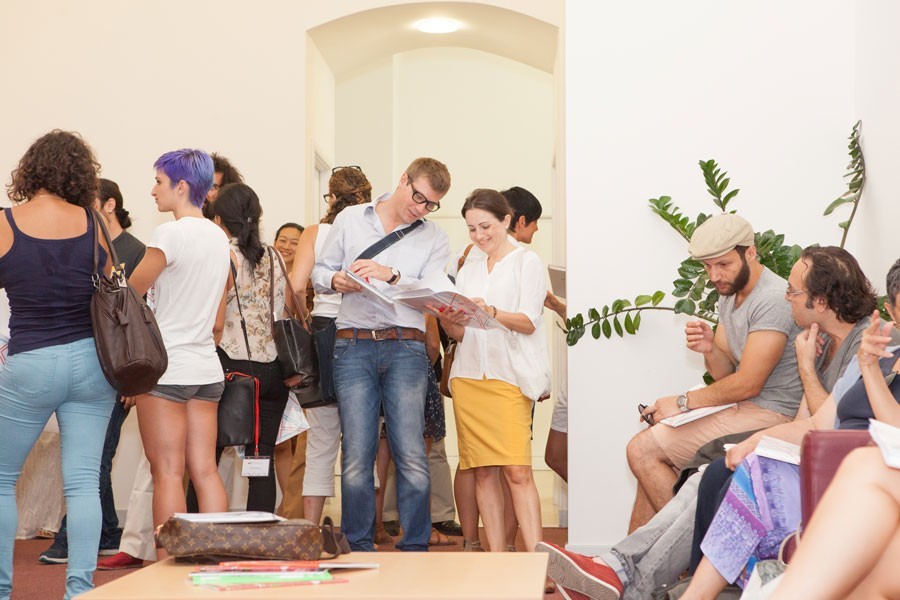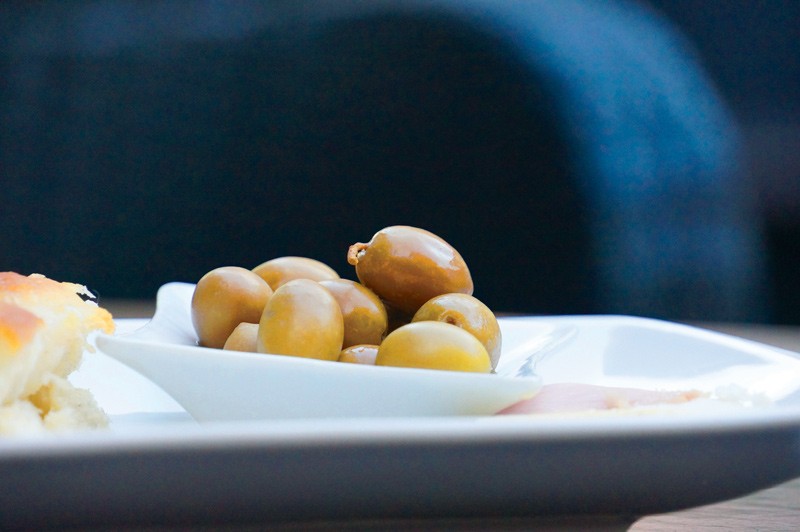Cleaning Contaminated Land with Plants

Carmen Sanchez Garcia
Soil sustains wildlife, landscapes, crops, forests, and air and water quality. Our survival and development depends on soil. However, a large amount of metals is being released daily into the environment through household waste, agricultural practices, and industrial activity.
Soil acts as a ‘sink’ for pollution, and depending on the soil’s chemical conditions, metals may persist there for long periods of time, posing a risk for humans and ecosystems. Maltese soils have a high concentration of lead, zinc, and copper. At high concentrations, these metals are harmful to many forms of life and can lead to a host of diseases including cancer. Carmen Sanchez Garcia (supervised by Dr Anthony Sacco) studied how to reduce the level of these metals in Maltese soils using plants instead of conventional methods.Continue reading
Is new tech killing social interaction?
by Matthew Cesareo from the Gadgets team
Cycling for Children with cancer
A Greener Chemical Pot
John Gabarretta discusses the elegance of chemistry though its reactions.
Hips 4 Eternity
All over the world, hip replacement surgeries are on the increase. Provisional data from the hip replacement register at Mater Dei shows that, in Malta during 2014, 145 people needed their hips replaced while another 11 needed revisions to old implants. With costs that run into the thousands, the problem of faulty implants caught the eye of a local research team of engineers and medics. Cassi Camilleri finds out more about their work in solving the dilemma. Photography by Elisa von Brockdorff
Placing Cultural Research on the Map
The Valletta 2018 Foundation recently started a five-year research study to evaluate and monitor the European Capital of Culture (ECoC) project in Malta. The process combines both quantitative and qualitative approaches to collect data that will be communicated to the general public and interested stakeholders. This research will provide feedback to help fine-tune or correct the Foundation’s operations. The process aims to provide a local model for research in culture and the creative sector in order to encourage more cultural research after 2018.Continue reading
Translating Education
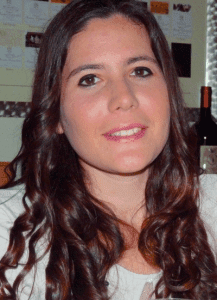
Research by Jana Galea
Language,translation,and education: three hot topics on the Maltese Islands.
Malta invests heavily in education with a big chunk of its budget, strength, and efforts invested to elevate standards. Malta is also largely bilingual. This is even reflected in Malta’s constitution which places both Maltese and English as official languages. Yet, deciding on which language to use to teach children is a thorn in the side of Maltese educational institutions. A viable bilingual policy is still needed.
The European Union places great importance on national languages. This policy elevates the importance of all EU languages no matter the country’s size. The EU releases its documents in each language—a boon for Maltese translation studies. However, there is a clear lacuna in terminology and glossaries for education documents.
Jana Galea (supervised by Prof. Anthony Aquilina) translated an international publication on education into Maltese and compiled an accompanying glossary of educational terms. Translators have to adopt the role of terminologists (professionals who research and locate information or past publications to ensure accuracy and consistency in the usage of terms) when working with specialised terminology, a time consuming activity due to the lack of standardised terms. A glossary of educational terms facilitates translation by providing an easy-to-access reference tool that ensures consistent terminology in translations.
The research tries to show that Maltese and English should not be seen as rivals constantly trying to outdo each other. The Maltese language is part of the country’s unique identity, its most democratic tool, and an official EU language. It is strong and continuously growing, as Prof. Manwel Mifsud stated ‘Ilsien żgħir imma sħiħ, ilsien Semitiku imma Ewropew, ħaj u dinamiku’ (A small but complete language, a Semitic language but European, alive and dynamic). Then there is the English language which is Malta’s main linguistic link to the rest of the world and the carrier of scientific, technological, and informational developments—both languages enrich the Maltese Islands.
This research was performed as part of a Master of Arts in Translation at the Faculty of Arts, University of Malta. It is partially funded by STEPS (the Strategic Educational Pathways Scholarship—Malta). This scholarship is part-financed by the European Union—European Social Fund (ESF) under Operational Programme II—Cohesion Policy 2007–2013, ‘Empowering People for More Jobs and a Better Quality of Life’.
Smaller, Faster, and just as pretty
Video streaming uses a lot of bandwidth. Internet service providers can either limit bandwidth or provide more. To bypass this problem newer encoders aim to compact video into smaller packages, to keep the same video quality but a smaller size.
The problem is the variety of video devices available that range from mobiles, tablets, and high definition TVs. This diversity results in various different video transmissions being needed. To avoid encoding the same sequence several times and reduce the traffic over a network, video coding called H.264/Scalable Video Coding (SVC) was introduced. This type of video coding allows a single stream to encode for time, space, and quality. This technology saves bandwidth. SVC is expected to become the standard for Internet streaming. The only thing holding it back is the need for a complex encoder.

Kurt Abela (supervised by Dr Ing. Reuben Farrugia) proposed the use of a Graphics Processing Unit (GPU) based encoder to speed up the encoder. The Block Motion Estimation (BME) module within SVC takes up the bulk of the total encoding time in standard H.264/AVC. Abela designed certain modules to be optimised for NVIDIA GPUs. Through an asynchronous programming model, the video encoder could be run simultaneously on the CPU (Computer Processing Unit) and GPU. By using this novel encoder, encoding was sped up at most 436x times, when compared to a reference model, with no loss in quality. The encoder was sped up even more with further improvements to allow real-time HD video encoding.
This system is much cheaper and easier to use than leading alternatives. GPUs are very cheap and already found in most computers. Further developments on GPUs could soon see them replace more expensive encoders in datacentres.
This research was performed as part of a Masters of Science in Information and Communication Technology at the Faculty of Information and Communication Technology, University of Malta. The research is partially funded by the Strategic Educational Pathways Scholarship Scheme (Malta). The scholarship is part-financed by the European Union—European Social Fund, under Operational Programme II—Cohesion Policy 2007–2013, ‘Empowering People for More Jobs and a Better Quality of Life’.
Maltese Olives and their genes
The olive tree (Olea europaea L.) is one of the oldest species of domesticated trees and the second most important oil fruit crop cultivated worldwide. 97% of the global olive cultivation is concentrated in the Mediterranean Basin. The olive thrives in Maltese soils. Economically, olives are not important for local agriculture, but its cultivation is becoming popular since the Maltese agribusiness has a lot of room for growth to make high quality oil and secondary products.
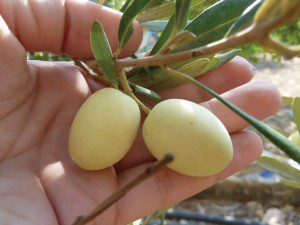 In the Mediterranean region there are two subspecies of Olive tree. These are the wild olive (O. europaea L. subsp. Oleaster) and the cultivated olive (O. europaea L. subsp. Sativa). Each subspecies has several cultivars selected for taste, size, disease resistance or other desirable qualities. There are 1,300 cultivars worldwide and Malta is no exception. The Maltija cultivar is probably the most popular Maltese cultivar and can give a high productivity. The Bidnija cultivar, which is believed to be the oldest Maltese olive cultivar (it is thought to date back to Roman times), produces oil of excellent quality rich in polyphenols (these have many health benefits), exhibits high tolerance to environmental stress such as salinity and drought, and demonstrates resistance to pathogens and pests such as the olive fruit fly. The Bajda variety produces a characteristic white drupe. Besides the native cultivars, there are a number of Maltese wild olives.
In the Mediterranean region there are two subspecies of Olive tree. These are the wild olive (O. europaea L. subsp. Oleaster) and the cultivated olive (O. europaea L. subsp. Sativa). Each subspecies has several cultivars selected for taste, size, disease resistance or other desirable qualities. There are 1,300 cultivars worldwide and Malta is no exception. The Maltija cultivar is probably the most popular Maltese cultivar and can give a high productivity. The Bidnija cultivar, which is believed to be the oldest Maltese olive cultivar (it is thought to date back to Roman times), produces oil of excellent quality rich in polyphenols (these have many health benefits), exhibits high tolerance to environmental stress such as salinity and drought, and demonstrates resistance to pathogens and pests such as the olive fruit fly. The Bajda variety produces a characteristic white drupe. Besides the native cultivars, there are a number of Maltese wild olives.
Renowned foreign varieties associated with high productivity tend to have a higher productivity than local cultivars. For this reason, local farmers find foreign varieties more convenient, leaving Malta at risk of forever losing its unique olives.
Till now revival efforts focus on artificial propagation and re-plantation. These trees are identified by their appearance. This is an inaccurate method since olive growth is influenced by environmental conditions.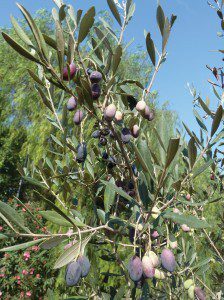
To develop a better way to identify local cultivars, Oriana Mazzitelli (supervised by Dr Marion Zammit Mangion) has focused on adopting a genetic approach. She also wanted to examine the genetic diversity of Maltese olive varieties. Mazzitelli compared the genetic patterns of local varieties to those generated by two commercial Italian (Carolea) and Tunisian varieties (Chemlali). The genetic analysis produced unique DNA profiles that can provide a more accurate means of identification than just looking at the plant.
The genetic variability between varieties was high. The Bidnija and Maltija stood out for their genetic uniqueness. The differences between local varieties suggest that, despite being allegedly native, the origins of the two are not directly linked. A number of DNA marker regions detected in the foreign cultivars and in the Maltese wild olive were undetected in the Maltese cultivars, suggesting that not all DNA markers are present and amplifiable in foreign varieties have been conserved in the Maltese cultivars. Mazzitelli’s work is an important first step to show that local varieties can be identified cheaply through DNA analysis. Without genetic identification, maintaining and cultivating local varieties would be near impossible—a case of genes for good olive oil.
This research is part of a Master of Science in Biochemistry at the Faculty of Medicine and Surgery, University of Malta. The research was funded by STEPS (Strategic Educational Pathways) scholarship which is part-financed by the EU’s European Social Fund (ESF) under Operational Programme II—Cohesion Policy 2007-2013, ‘Empowering People for More Jobs and a Better Quality of Life’.

